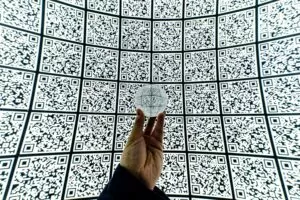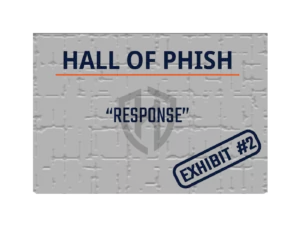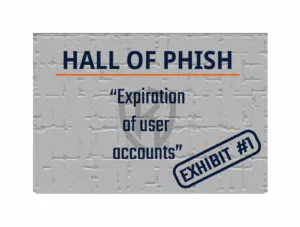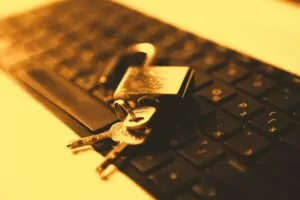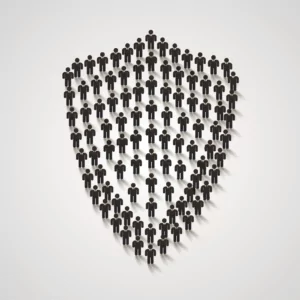QR Codes can be found everywhere nowadays. You can’t turn around without seeing the signature black and white pixels of one on a billboard, a restaurant tabletop, or the back of a business card.
If you’ve wondered what they’re all about, you’re not alone. We’ll save you researching – here’s everything you need to know!
So What Are They, Exactly?
A Quick Response Code, more commonly known as a QR Code, is a type of two-dimensional barcode.
The first QR code was developed in 1994 by Masahiro Hara, Chief Engineer at Denso Wave – a Japanese company who was a subsidiary of Toyota!
A barcode – easy enough! But what makes it so unique?
The answer is simple: it’s storage capacity. According to Scanova, QR Codes can store up to 7089 digits or 4296 characters, including special characters. Standard Linear Barcodes (like the ones you see on products in the grocery store), can only store 8 to 25 characters of data. Incredible!
Breaking It Down
There are two types of QR Codes – Static and Dynamic.
Static QR Codes
Information stored on Static QR Codes is fixed – meaning that once this type of QR Code is generated, the data on it cannot be modified. Additionally, the scan and usage data of Static QR Codes cannot be tracked, leading to lost metrics.
Say your business generated a Static QR Code to lead potential customers to your company’s Home page. A few weeks later, you decide you’d rather that QR Code direct customers to the Services page instead. To do this, you’d have to completely abandon the first Static QR Code and generate a brand new one. Imagine if you’d used this QR Code in print media. All that collateral would be useless!
Enter the Dynamic QR Code.
Dynamic QR Codes
Dynamic QR Codes, as their name suggests, are the most flexible of the bunch. Not only can their content be edited, but their scan and usage data can be easily tracked. Information on the total number of scans, the date/time a scan occurred, and even the location (city, country) of the scan is accessible with the right platform.
The versatility of Dynamic QR Codes make them an ideal choice for businesses seeking to uniquely market their products and services. Industries from retail to real estate use QR Codes to link to:
- their company website;
- a proprietary app;
- a contest or promotional page; or
- their products or services.
QR codes were initially used to track vehicles and parts as they moved through manufacturing!
That’s not all! Restaurants place QR Codes on their dining room tables for customers to access their menu, creating a touchless experience. Delivery services use QR Codes to allow customers to track their packages. Some healthcare providers even use QR Codes to create a quick link for their patients to fill out an online screening form. The possibilities are truly endless!
Getting a Bit More Technical
QR Codes store their information as a series of pixels in a square grid. They can be read in two directions — top to bottom and right to left – and are easily readable by digital devices such as smartphones.
The pixels on QR Codes are known as Data Modules, or simply Modules. Each black or white square is a single Module and contains parts of the data encoded in the QR Code. An equal number of rows and columns of Modules make up each QR Code, meaning every QR Code will take the shape of a square.
Error Correction
One of the neat things about QR Codes is that they have the capability to remain scannable even if they are damaged. This is thanks to an algorithm called the Reed-Solomon Error Correction, which mathematically adds backup data to the QR Code. It allows technologies such as CDs, DVDs, Blu-Ray Discs, and QR Codes to continue to work despite scratches or everyday wear and tear.
Error correction can be added to the QR Code during the design process. The most common reason for doing so is to add an image or logo to create a completely customized QR Code, unique to that particular business.
There are four levels of error correction that can be added to a QR Code:
- L: up to 7% damage
- M: up to 15% damage
- Q: up to 25% damage
- H: up to 30% damage
Each level will add a different amount of backup data to the QR Code, depending on how much error correction may be needed. As the error correction level increases, so will the number of Modules of data – ultimately resulting in a larger QR Code.
Why Use QR Codes?
QR Codes are incredibly versatile. They offer businesses a valuable tool which bridges the gap between print and digital marketing.
Custom QR Codes with images and colours attract anywhere between 50% to 200% more scans than plain black and white QR Codes!
Here are but a few of the benefits of using QR Codes:
- Ease of Use: With a single scan of your smartphone, it takes mere seconds for pages to load, getting online content into your customer’s hands quickly!
- Error-Free: Sure, you could type in a web address that you see on a printed flyer – but if you’re like many people, it’s easy to make a mistake typing it in. Scanning the code means no more errors!
- Access Media and Information: There’s only so much information and media you can include in your print media. With a single QR Code, you can provide fast access to large media files (such as videos) or lengthy informational policies (such as Privacy, Safety, or Environmental policies).
- Create Links: Using QR Codes, your business can offer discounts, run contests/promotions, or even enable users to share your business’ social media posts!
Danger Ahead!
QR Codes can (unfortunately) be used maliciously. How, you might ask?
Well, QR Codes can do much more than simply directing you to a website address. They can also initiate actions that can cost your business money. This includes making phone calls, sending text messages to a premium rate phone number, or sending payments on your behalf – all without your consent or knowledge. They can also:
- Install Malware: The download and installation of malware can happen in the background after a malicious QR Code is scanned. You’d never know something had downloaded either, as their developers ensure that the app icons always remain hidden.
- Create Calendar Events: While this action alone isn’t necessarily nefarious, it would most assuredly be an annoyance to have fake events clogging up your calendar. These fake events can also include a malicious link within the event invitation, urging participants to click it – leading them (unknowingly) to a website where malware could be downloaded to their device.
- Expose your Location: Even if location sharing is turned off on your device, scanning a malicious QR Code could turn it back on, revealing your location and gathering information on your device and the network it’s on.
Sadly, malicious QR Codes are difficult to spot because their contents are hidden until they’re scanned.
So what’s a business to do?!
Prevent and Protect
If you are a business that utilizes QR Codes, keep an eye out for signs of tampering on any physical marketing materials you have. Stickers with a different, malicious QR Code, can easily be placed overtop, masking your legitimate QR Code.
If you don’t use QR Codes in your business, but still want to remain secure, you can educate your first line of defense – your staff – with these helpful tips!
- Be cautious when you see a QR Code. Only scan it if you know it’s safe!
- Instead of scanning the QR Code, go directly to the business’ website.
- If someone you know sends you a QR code, confirm with that person that they really sent it before you scan the code.
- Don’t open links from strangers!
- Be wary if a URL-shortened link appears when you scan a QR code. If a URL-shortened link appears when you scan a QR code, understand that you can’t know where the code is directing you. It could be hiding a malicious website!
